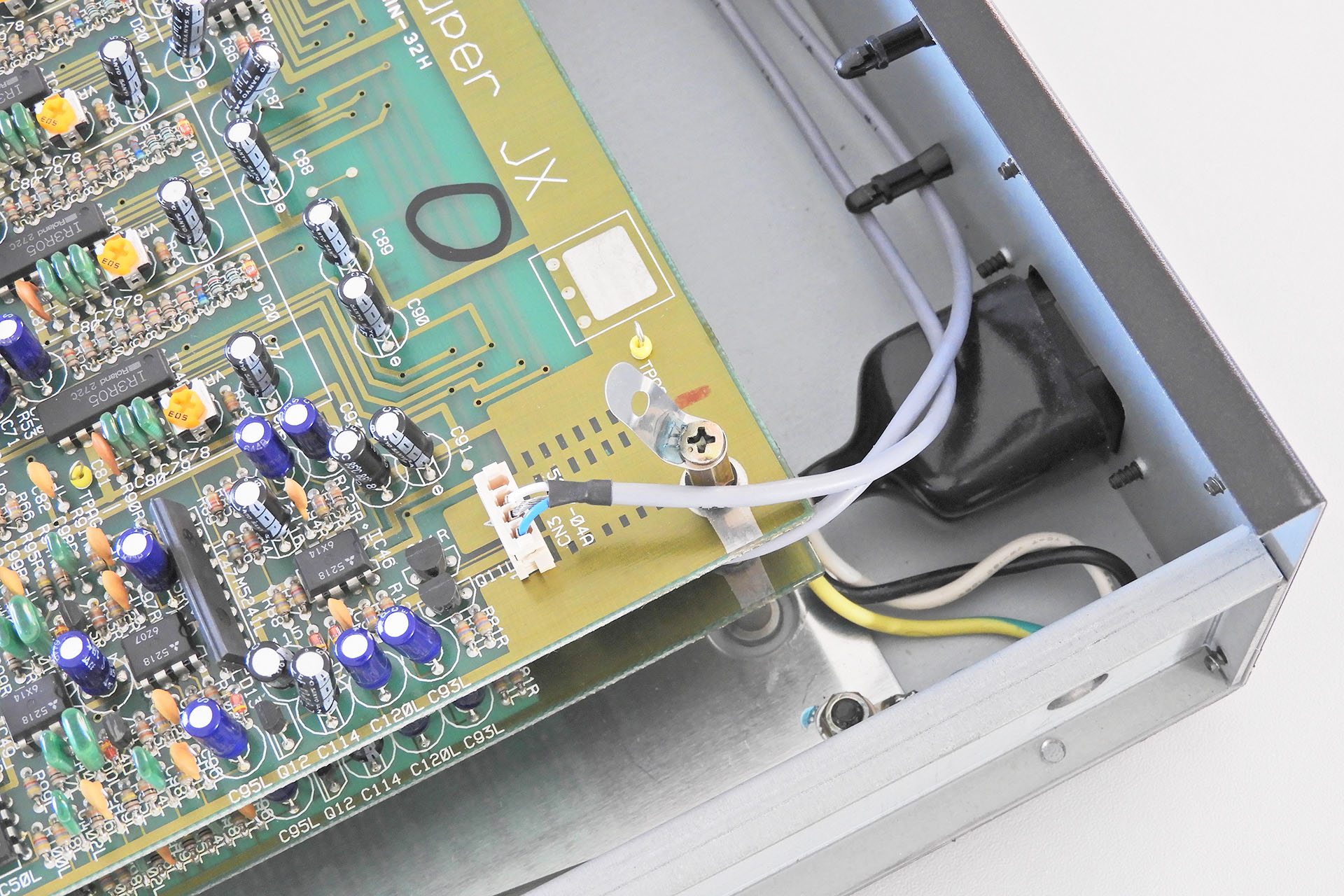 With voice generation on two boards that were separate to the audio output board and with so much electromagnetic radiation within the box, one wonders why Roland didn't use screened cables to connect the audio signals from the module-boards to the jack-board. Well, thirty-something years later, some idiot's decided to address the issue and make screened audio cables for the Roland MKS-70... ME! 😀
With voice generation on two boards that were separate to the audio output board and with so much electromagnetic radiation within the box, one wonders why Roland didn't use screened cables to connect the audio signals from the module-boards to the jack-board. Well, thirty-something years later, some idiot's decided to address the issue and make screened audio cables for the Roland MKS-70... ME! 😀
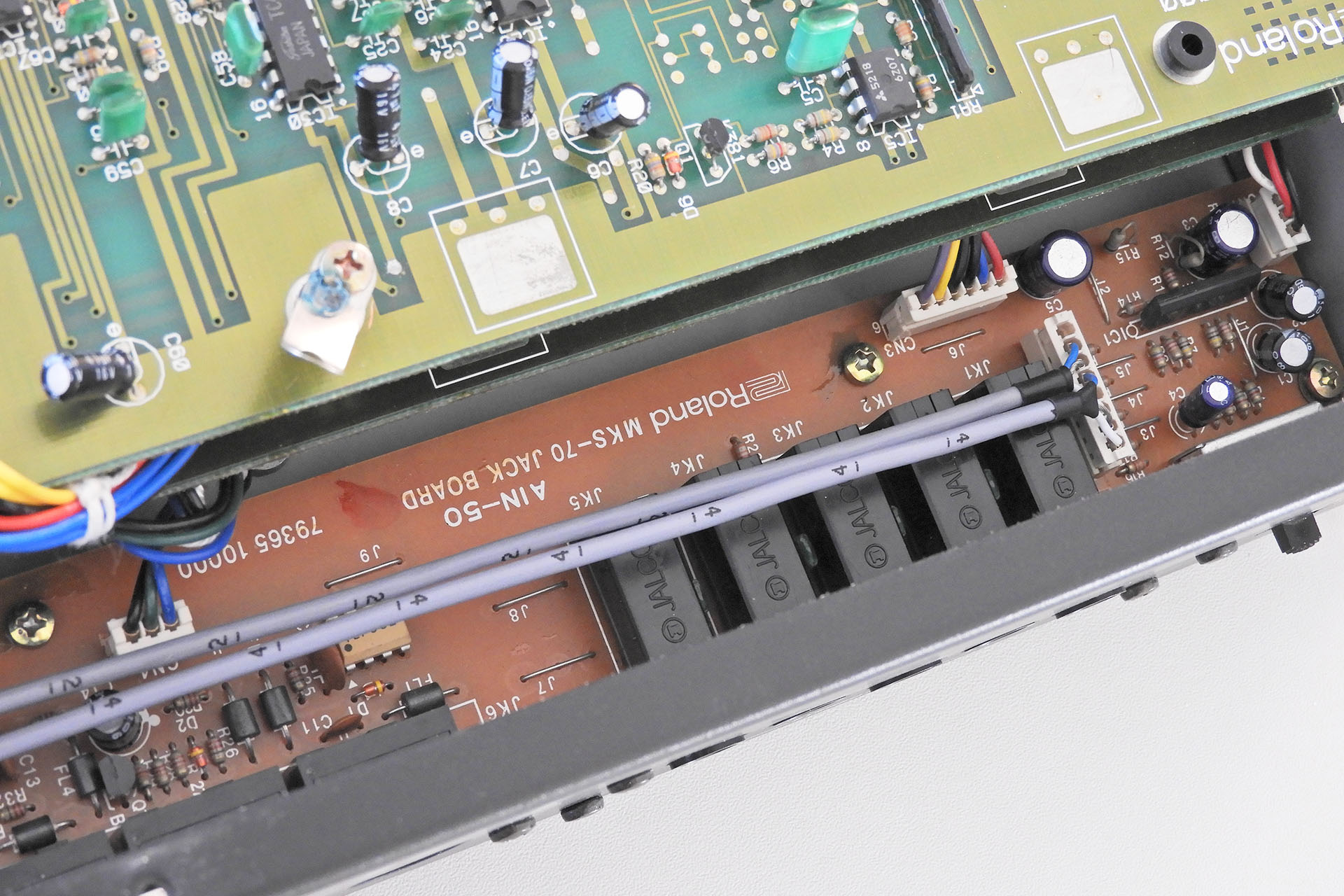
Weird isn't it; The audio connections between the module-boards and the jack-board in the JX-10 are screened but they aren't in the MKS-70. Of course the distance they need to cover is much greater in the JX-10, with one cable running from near the PSU (hint, hint) on the right of the keyboard, all the way to the jack-board which in on the left.
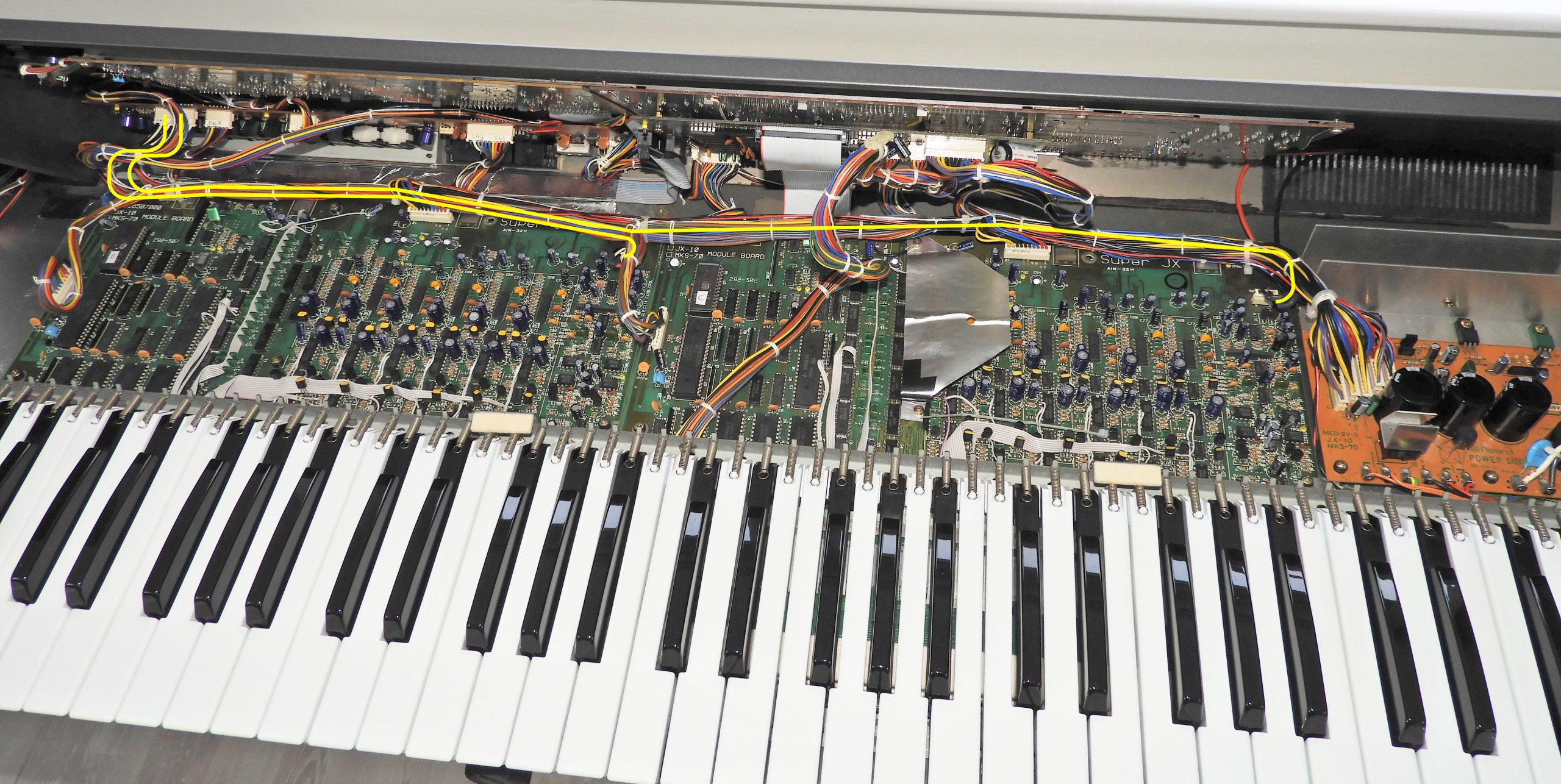
In comparison, the distance that the audio cables cover in the MKS-70 is only about 30cm.
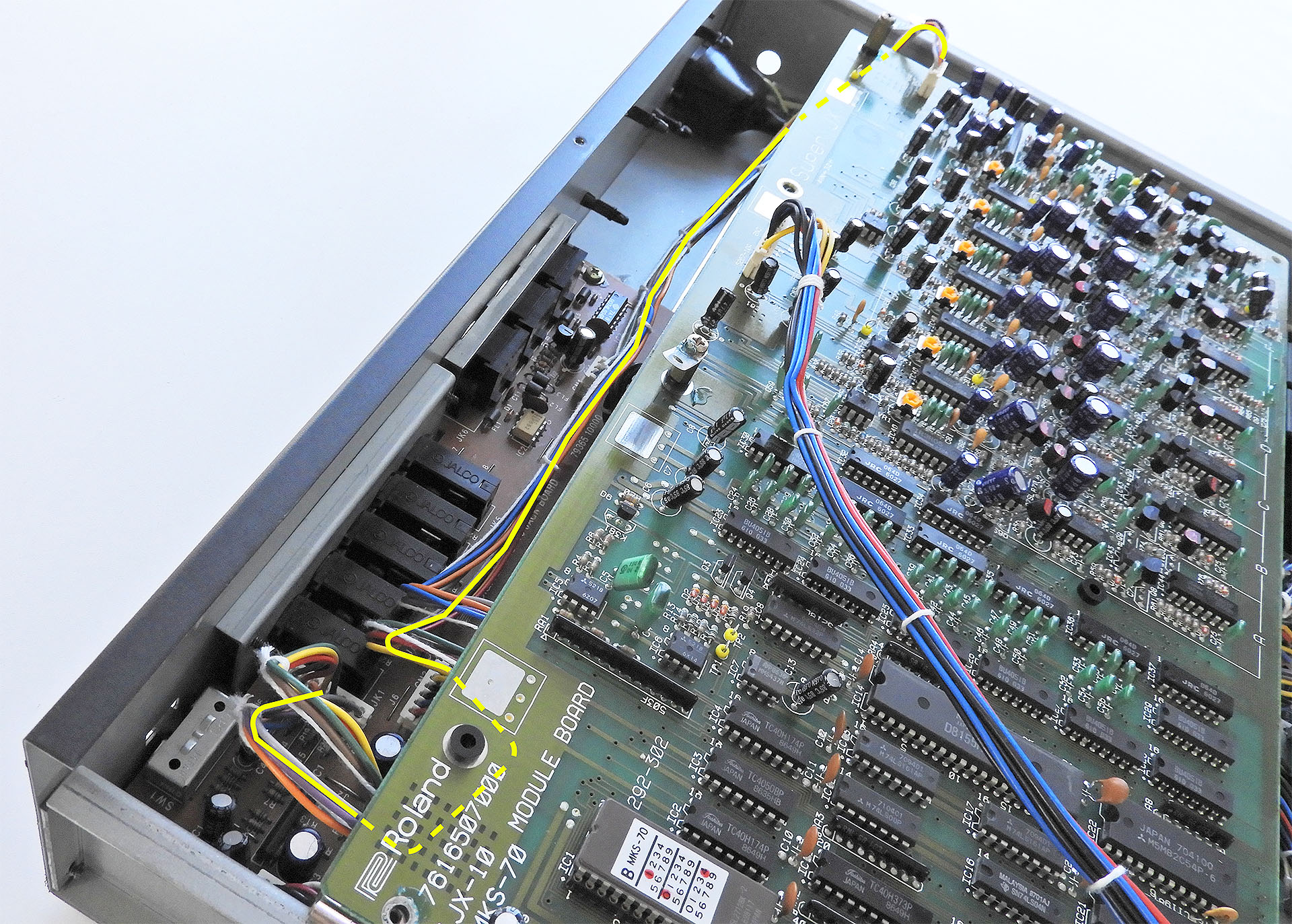
The potential for noise inside these old synths is considerable and the wires that Roland used act like aerials and can pick up a lot of internally generated noise.
Replacing the original power supply in the MKS-70 (or indeed the JX-10) with Guy Wilkinson's P0004 modular switched-mode power supply, will go a long way to reducing electromagnetic radiation as for a start, that big transformer gets wasted. Unfortunately, there are still a lot of wires distributing DC power voltages, digital signals, etc, all over the place and these do generate stuff that really isn't good for our audio. Unlike it's Super-JX cousin, the audio cables in the MKS-70 aren't tied up in a long loom together with other cables, so that's at least one consolation.
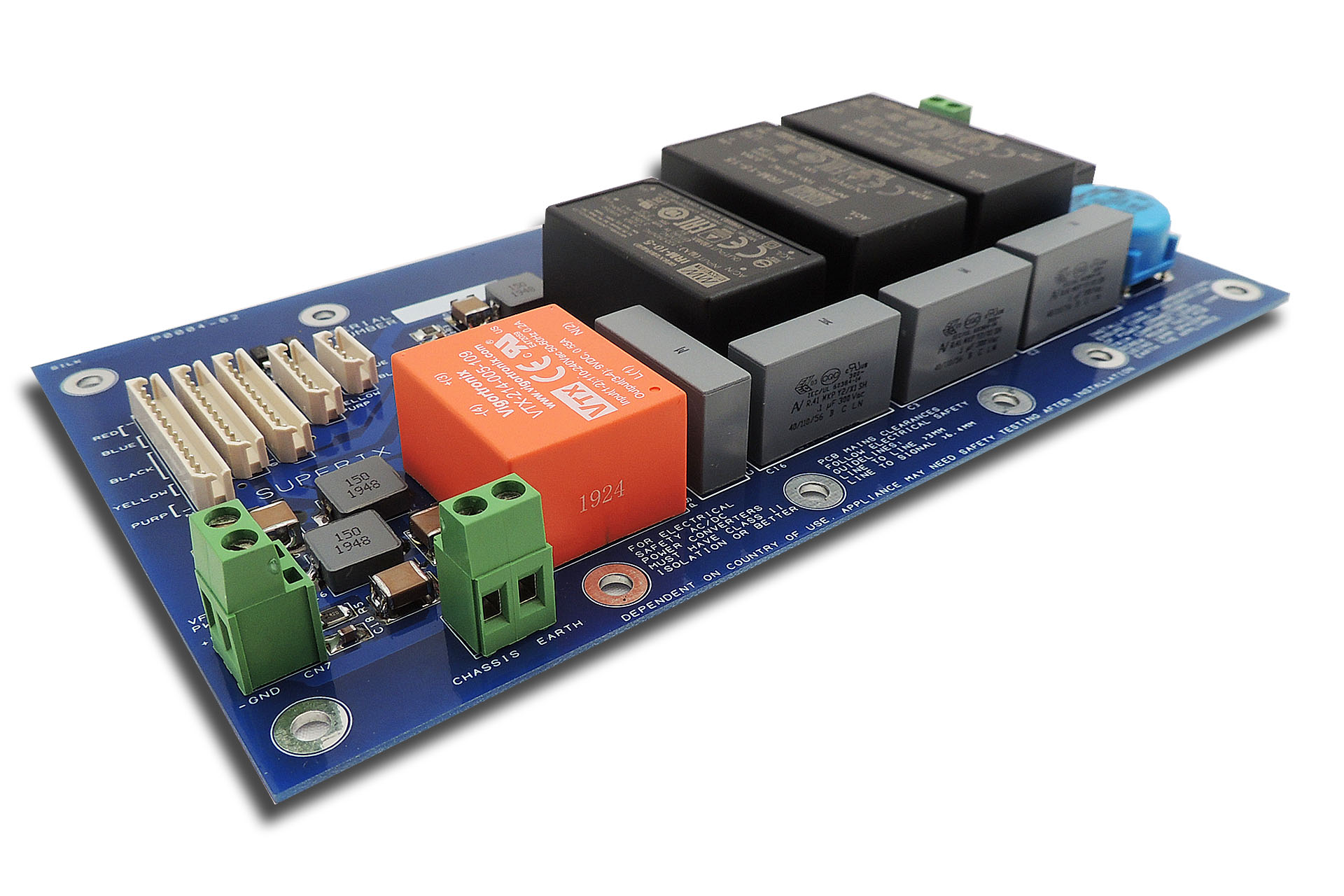
Nebula, my balanced outputs jack-board for the MKS-70, improves noise immunity between the MKS-70 and the destination device like a mixing desk, for example. Nebula however, cannot get rid of noise that arrives at its inputs. Any noise at the inputs of Nebula will be passed on to its outputs, albeit with pristine quality!
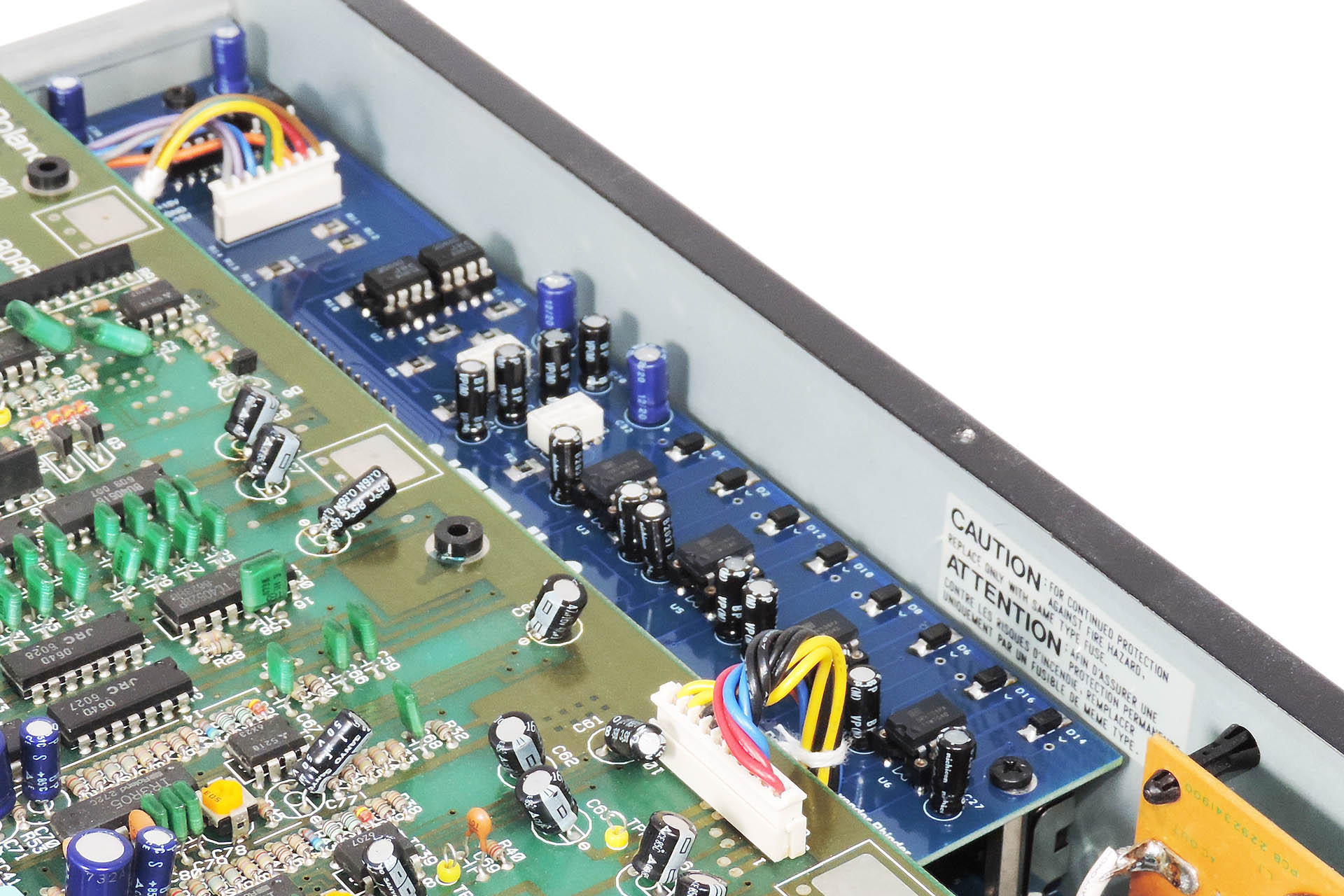
My screened audio cables for the Roland MKS-70 have been extracted from multi-core cables. These selected, high-quality, low-mass and flexible cables have an internal metal foil screen which, unlike the mesh screen in say, a microphone cable, provides 100% coverage of the audio signal carrying conductors. That's a big deal as this makes it really difficult for noise to get to our audio in the first place.
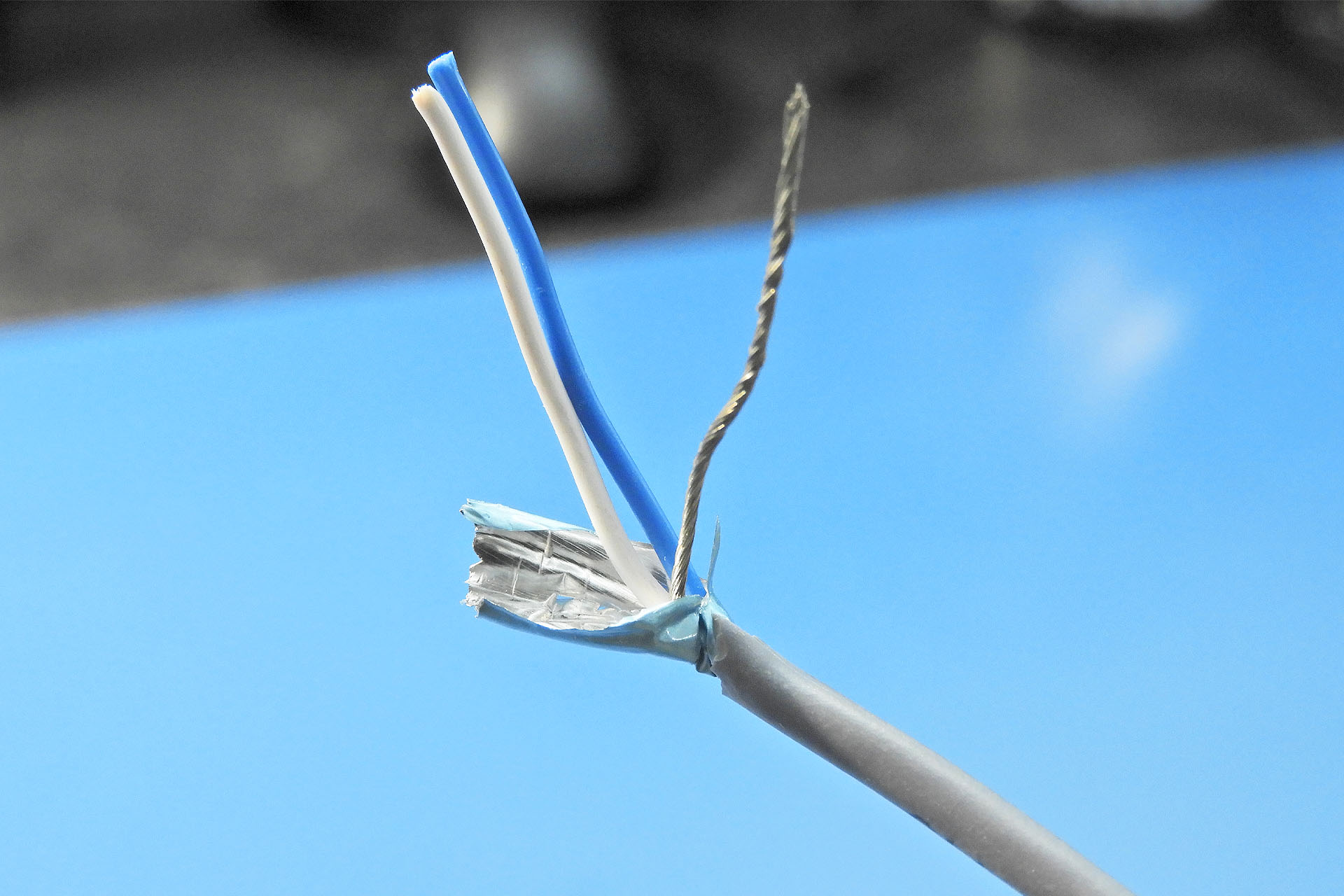
Now then, you'll notice a slight difference between the wires going into the connectors I'm using and the wires going into the stock Roland connectors; I have three wires (left, right, earth) and Roland has four. Well, the additional wire on the Roland version is another earth wire giving you left audio / left earth, right audio / right earth.
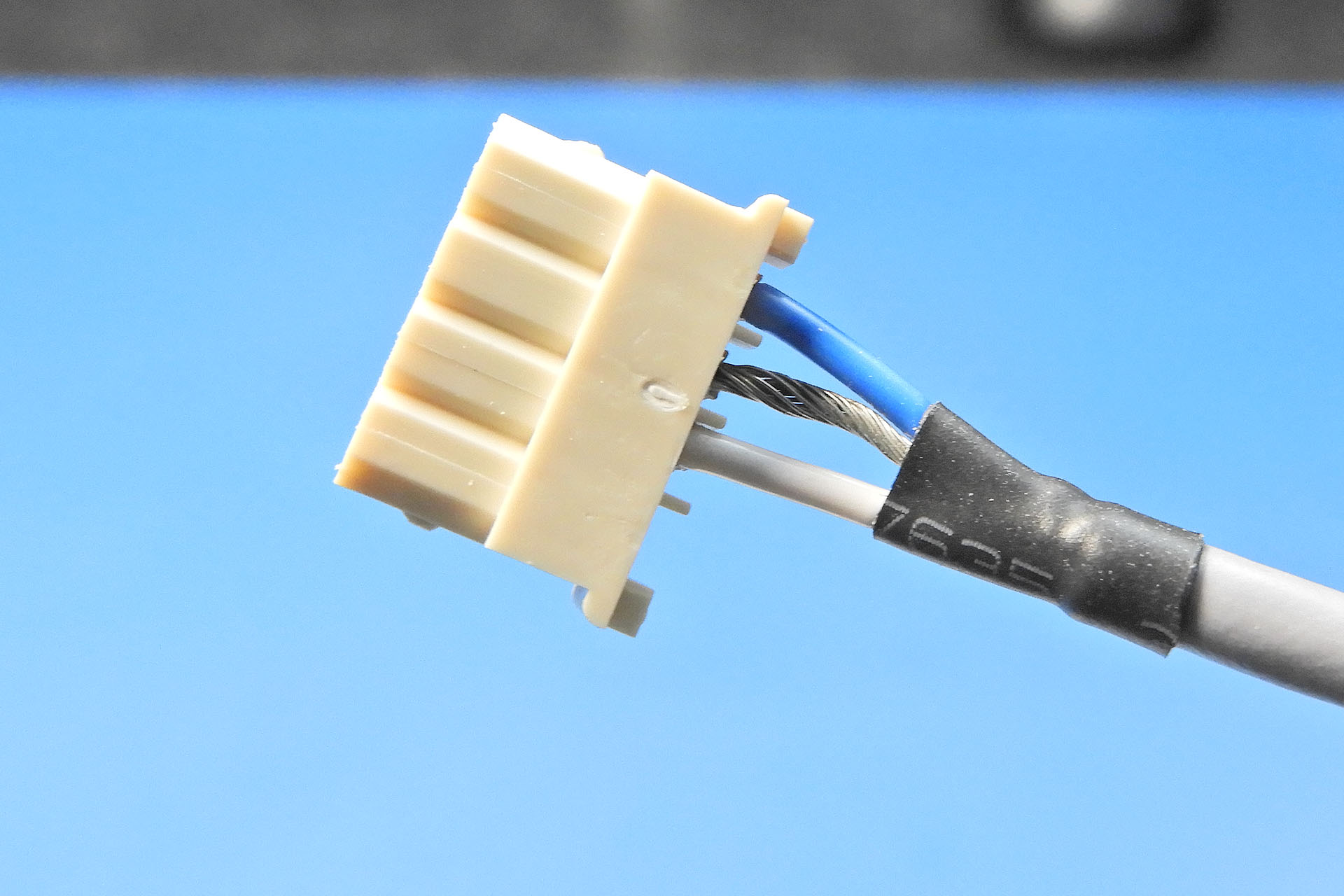
But hang on a minute; those earth wires are connected (shorted) at the module-board end but also at the jack-board end. So why on earth (pardon the pun), did Roland do this? An excellent question.
Separate earths for left and right audio channels is a method employed by designers to reduce crosstalk, often when high source impedances or low destination impedances are present or when there's the potential for ground (earth) not to be exactly zero volts!
As can be seen in the image below, the outputs from the module-boards come off a pair of op-amp stages and so the output-impedance of the module-boards is (very) low. The passive mixing / switching on the jack-board which combines respective module-board channels and also automatically gives the Super-JX either stereo or individual outputs depending on which output sockets are used however, comprises relatively low value resistors. Okay, no big deal because the input-impedance of each channel of the headphone amp is about 100kΩ. Effectively strapped across each input, we can consider the input-impedance of the jack-board to be very close to that and hence; high. This configuration is the same on both the MKS-70 and the JX-10. Great! So that's all good.
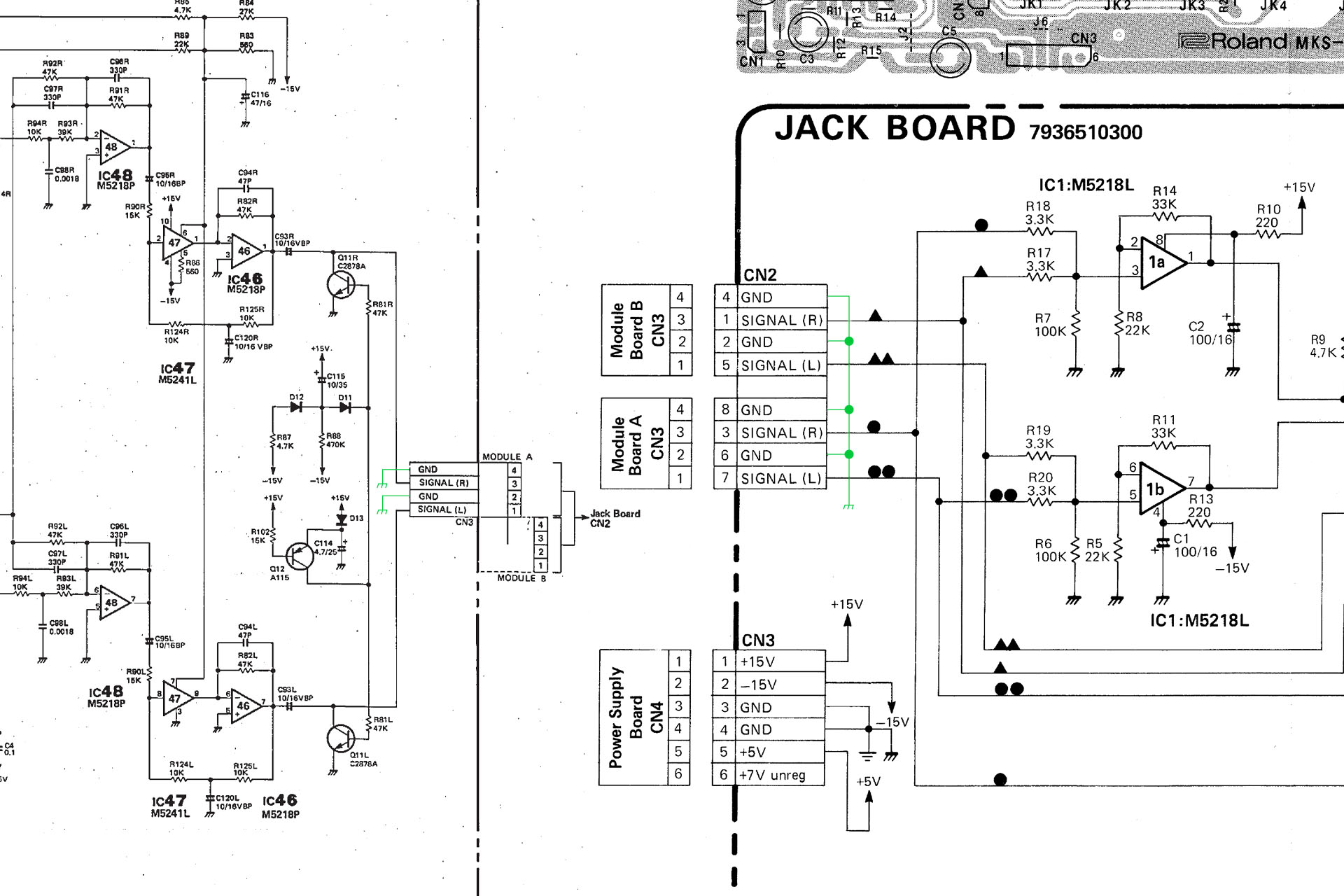
So crosstalk isn't an issue in the MKS-70 as it is in the JX-10.
Incidentally, if you're interested, you can read more about Super-JX crosstalk here.
It's also worth mentioning that if the system has an absolute earth, then crosstalk would be greatly reduced. The reason for that, is discussed in the post link above.
As we know however, many Roland instruments from the time of the Super-JX, were supplied with IEC 2-pin C9 power sockets and were therefore not directly connected to mains earth. Could this be the reason why Roland used two earth wires between each module-board and the jack-board? It certainly sounds like it.
If you're Super-JX has an IEC 2-pin C9 power input socket, then you really should consider my IEC C14 earth bonding kit.
One small point of convenience with my screened audio cables for the Roland MKS-70, is that since they're extracted form multi-core cables, the cores are numbered. This means that confusion between upper, lower, module board A, module board B, EPROM B, EPROM C, is now a thing of the past.
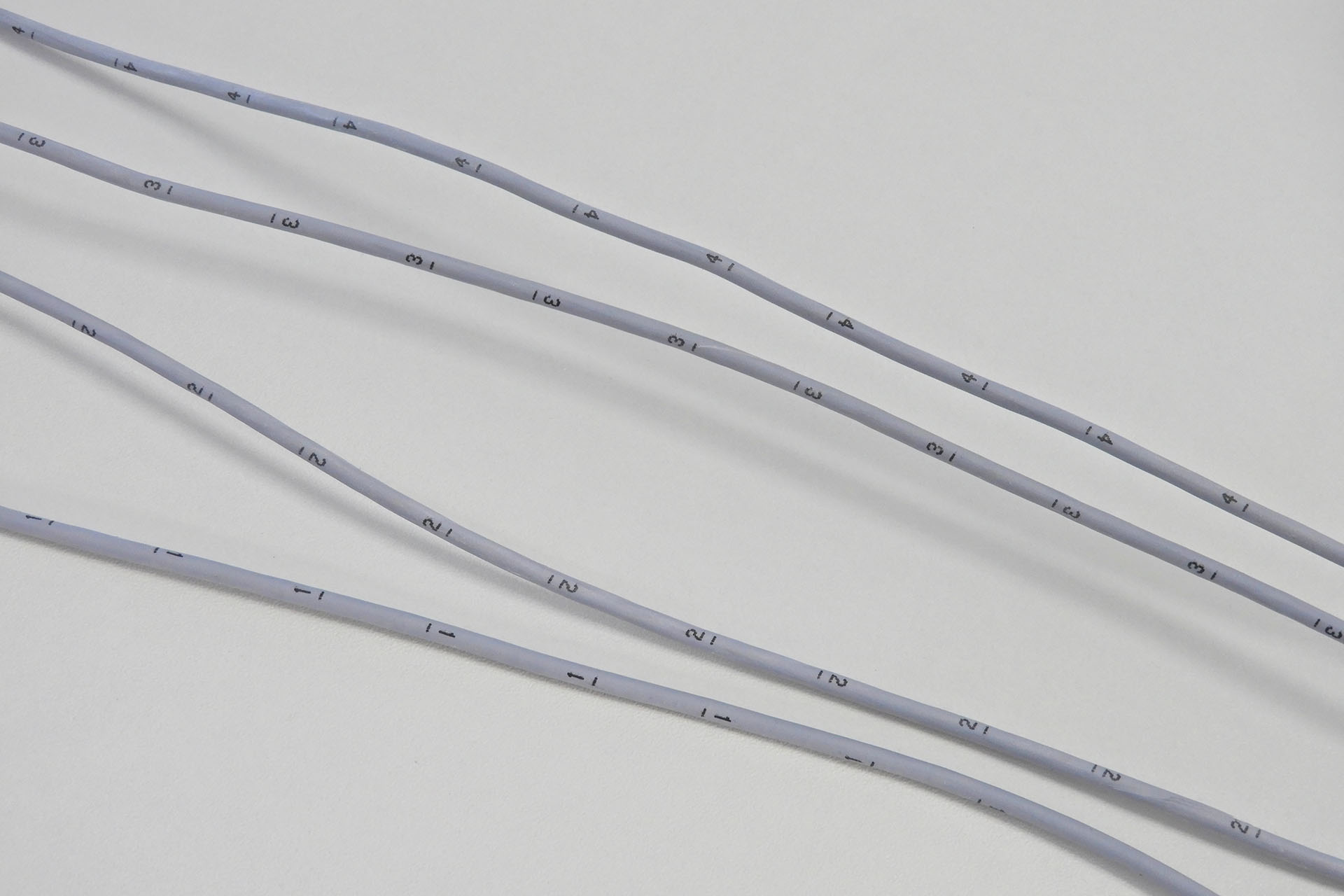
The module-board assignment is as follows:
- module board A is the upper voice-board and has ROM B installed.
- module board B is the lower voice-board and has ROM C installed.
NOTE: Module board A with ROM B installed should have a black wire in position 10 on CN2. Module board B with ROM C does not have this wire and position 10 on CN2 is empty.
NOTE 2: It doesn't matter which module-board is physically the top one or the bottom one although it would make sense to have the 'upper' module-board on top. 🙂 'Upper' doesn't mean top and 'lower' doesn't mean bottom. Upper and lower refer to the voice groups.
Quite simply, the lowest numbered core goes to CN3 on module-board A (with EPROM B) and the highest numbered core goes to CN3 on module-board B (with EPROM C).
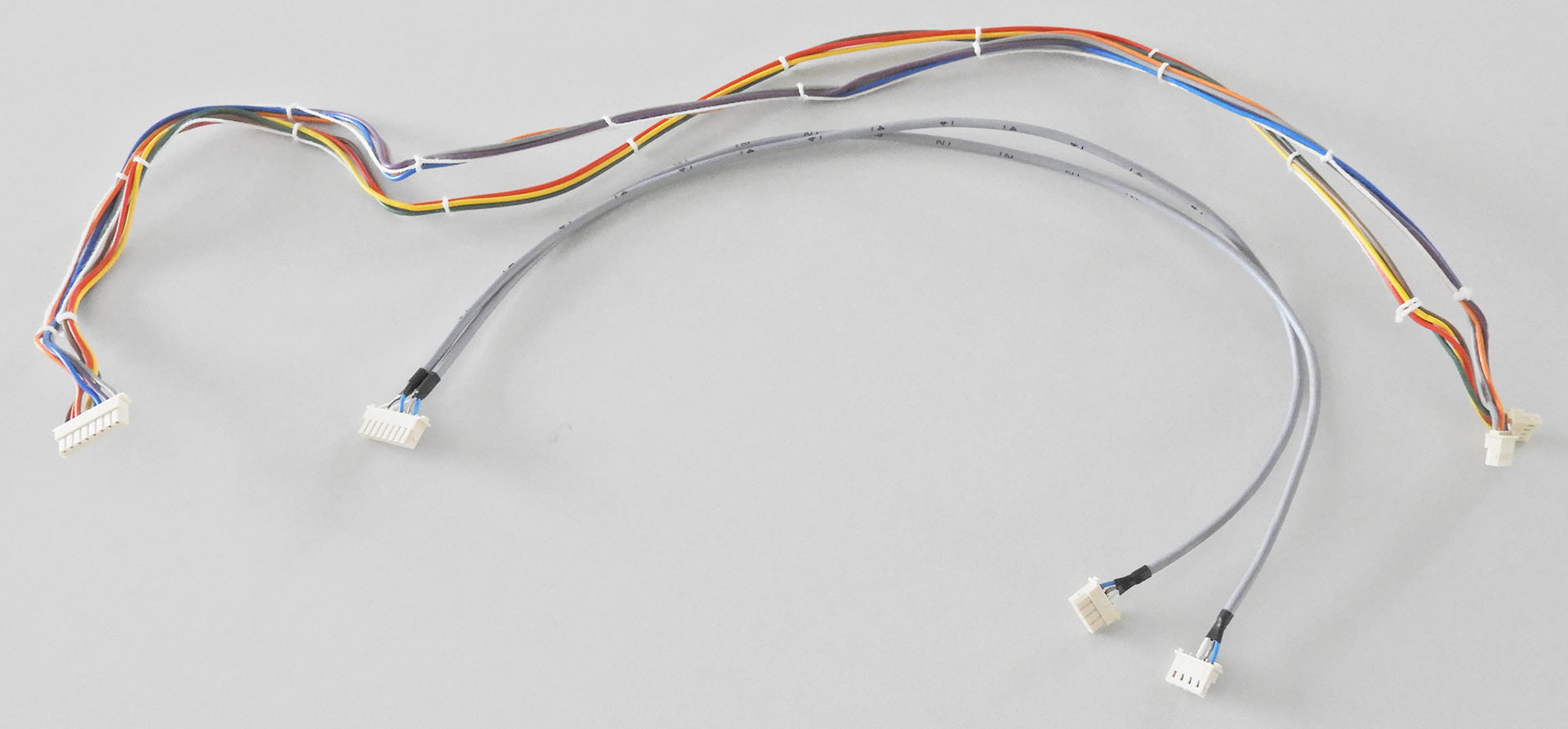
Okay, let's be honest; all that explanation is meaningless if there's no difference between using the original cable and my new screened cable, right? Well, this wasn't just something I did because I felt like it and in my usual manner, I conducted several tests.
Below is an image which shows the result of one of the tests. As can be clearly seen, one of the wires used in the original connection between module-board and jack-board picks up a lot of 50Hz (I'm in the UK) mains hum. The screened equivalent doesn't!
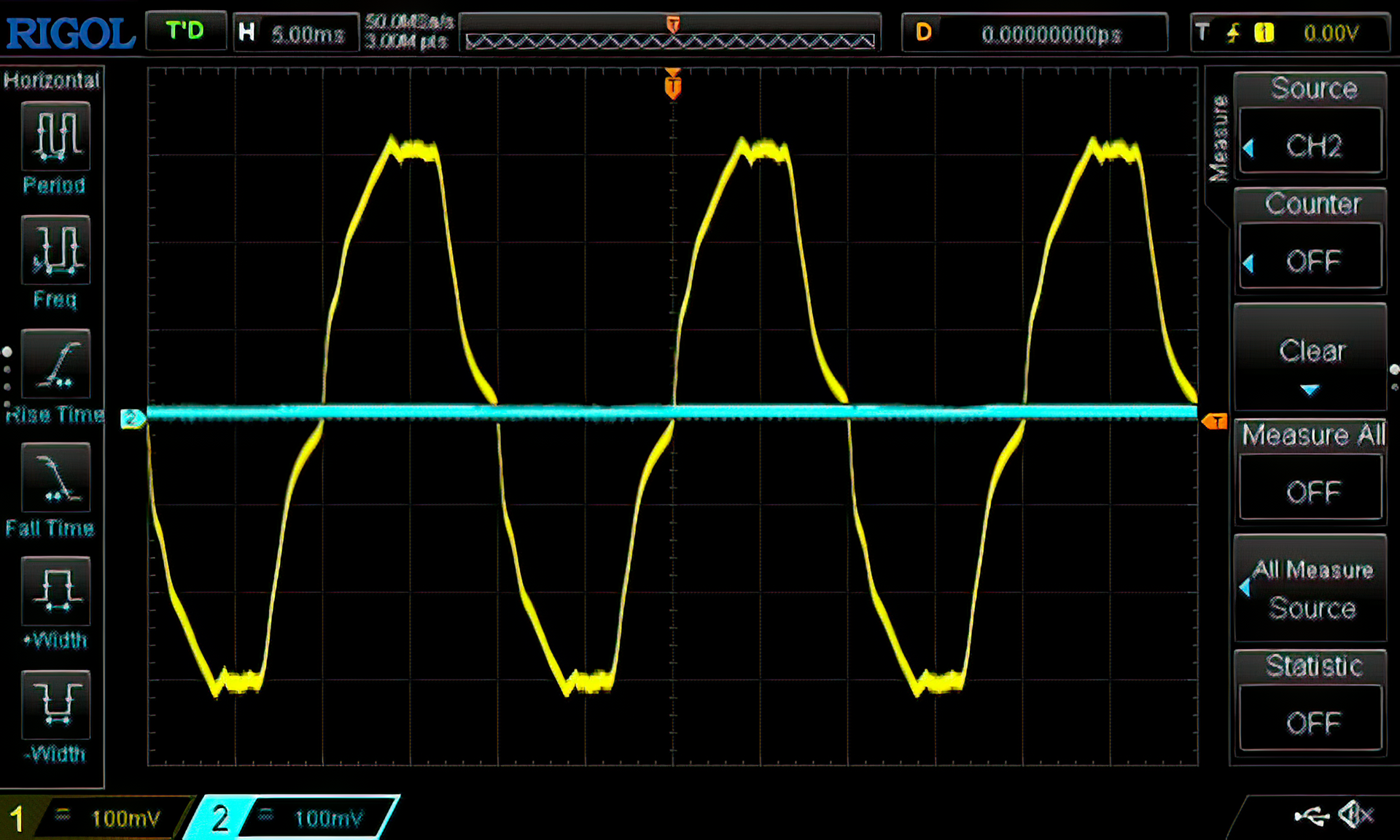
The reason that my audio cables for the Roland MKS-70 took a while to get out was because I had to buy a special crimping tool to attach the metal terminals that are in the connector housing, to the wires inside the cores. So what's the big deal? Well, it cost 345 GBP plus tax and with respect to all my Roland MKS-70 friends, this was a big commitment and it took me a while to make the decision to do this. As ever, Julie my wife was really helpful and reminded me of just how much I love what I do.
I don't like being taken for granted but my customers demand the best and delivering the best is something they can take for granted.
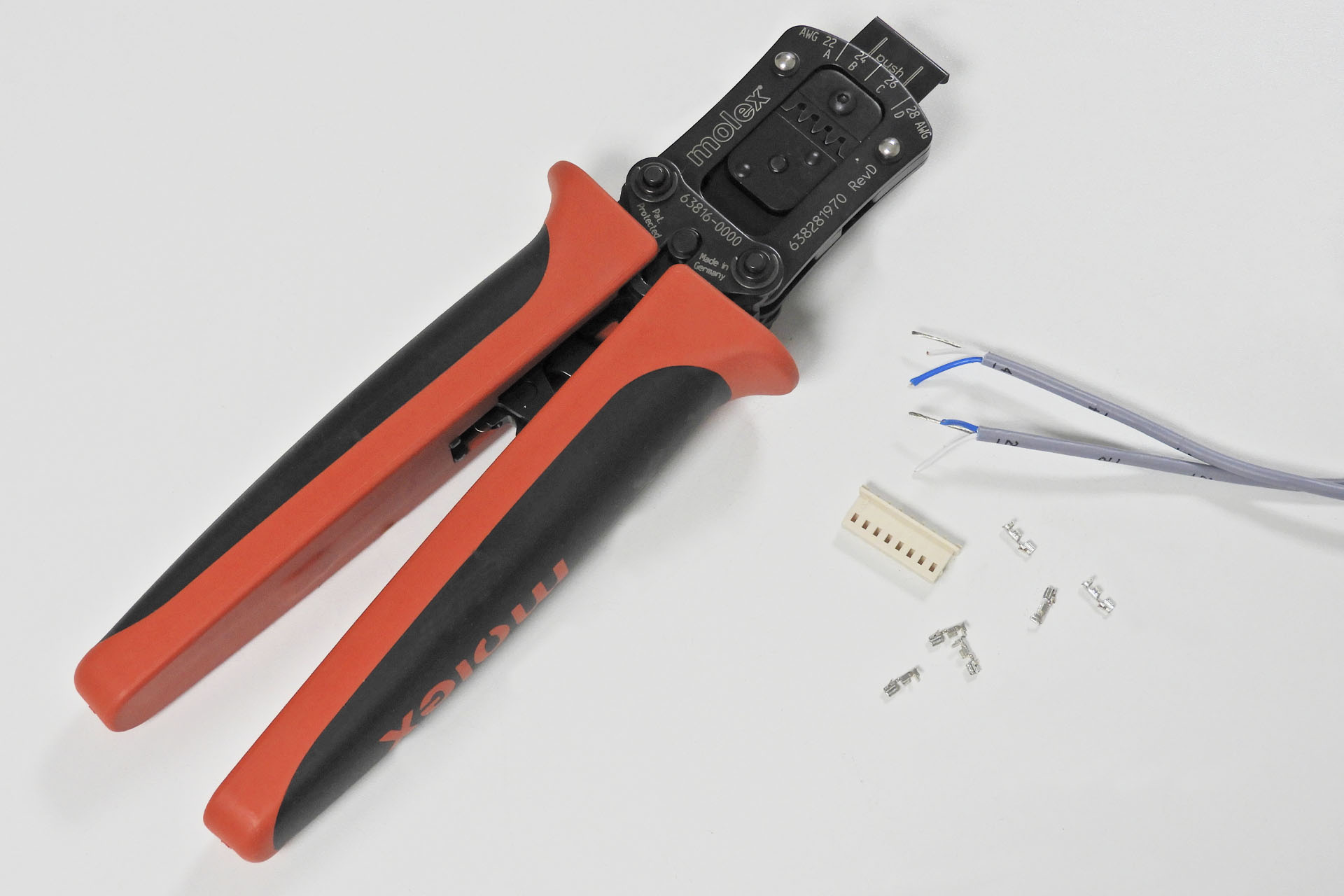
With no soldering required, all you need to do is open up your MKS-70 and replace the existing aerials, sorry, I mean wires, with my screened audio cables for the Roland Super-JX. It's a simple ten minute job and will reduce the noise that's picked up from internal electromagnetic fields that's generated by components and wires carrying DC power and other stuff.
If you want to improve the quality of the signal that comes out of your Roland MKS-70, you can buy my screened audio cables for the Roland Super-JX here:
This kit will now also be available at a reduced price, to those who buy Nebula.
NOTE: My screened audio cables for Roland MKS-70 will not fit into the JX-10 as they're way too short. On top of that, the internal audio cables in the JX-10 are already screened!
EVEN MORE NOISE REDUCTION
As I've already mentioned, my Nebula balanced outputs jack-board increases noise immunity between your MKS-70 and the destination device, like a mixing desk. My screened audio cables for the Roland MKS-70 will considerably reduce noise picked up between the outputs of the MKS-70 module-boards and the jack-board. BUT... remember that this is an analogue machine! There's a lot of 'analogue' stuff happening on those module-boards and yet they've got a whole bunch of power and data cables running all over them.
Realising that the beautifully loomed Roland cabling could be a source of noise for the module-boards, Guy Wilkinson addressed the issue by rerouted it. What he did is definitely worth checking out. Here Guy goes into great depth, explaining a lot of theory and how to perform a simple cable modification that'll reduce the noise picked up by the module-boards. HEY, AND NO SOLDERING INVOLVED!!! 🙂

